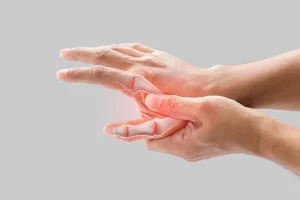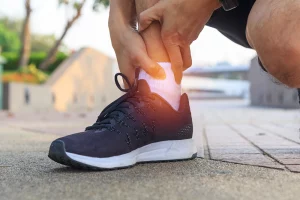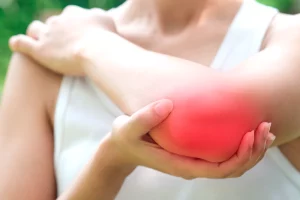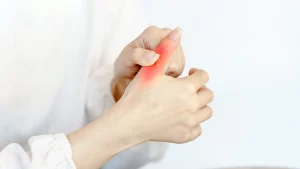Tennis elbow brace can help if your elbow aches when lifting a coffee mug, typing, or carrying groceries.
That lingering pain on the outside your elbow might seem minor at first — until it starts interfering with everyday life. What you’re feeling could be tennis elbow, and it’s more common than you think.
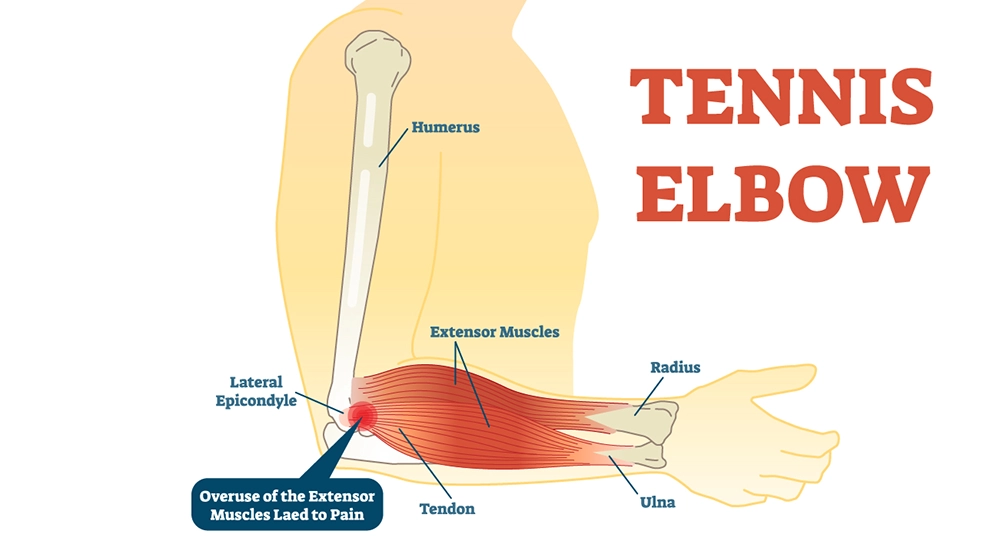
Tennis Elbow Nowadays in US
- Tennis elbow is most common in adults aged 30 to 60, with the highest risk between 40 and 50 years old.
- More adults over 65 are now being diagnosed with tennis elbow, as many continue using their arms for daily tasks later in life..
- Although it’s called “tennis elbow,” only 5% to 10% of cases are linked to tennis — most are caused by daily, repetitive movements like typing, lifting, or using tools.
What Is Tennis Elbow?
Tennis elbow, or lateral epicondylitis, is a painful condition caused by overuse of the forearm muscles. Repeated stress leads to small tears and inflammation in the tendons that attach near the outside the elbow.
Common triggers include:
- Repetitive gripping — typing, gardening, or lifting objects
- Improper sports technique — especially in tennis, golf, or racket sports
- Occupational strain — frequent tool use by carpenters, chefs, or mechanics
Though often linked to athletes, tennis elbow can affect anyone whose daily tasks involve repeated arm or wrist movements.
Symptoms of Tennis Elbow
The most common symptom of tennis elbow is pain or burning on the outer part of the elbow, especially during activities that involve gripping or lifting. The pain may start gradually and worsen over time.
You may notice:
- Elbow pain when lifting objects or shaking hands
- Weak grip strength — even holding a mug may hurt
- Pain that radiates down the forearm
- Stiffness or soreness in the morning
Tennis elbow can affect just one arm — usually your dominant one — and may make daily tasks like typing, cooking, or using tools uncomfortable.
Why You Need a Tennis Elbow Brace
A tennis elbow brace works by applying gentle pressure to the forearm muscles just below the elbow. This helps reduce strain on the injured tendon, allowing it to rest and heal without completely limiting your movement.
Here’s how it supports recovery:
- Relieves pain by offloading pressure from the inflamed tendon
- Prevents further injury by limiting harmful motions during daily tasks
- Supports healing while still allowing functional arm movement
- Improves grip strength by stabilizing the muscles involved in gripping
Whether you’re working, exercising, or just going about your day, a well-designed elbow brace can make a big difference in your comfort and recovery.
How to Choose the Best Tennis Elbow Brace
Not all elbow braces are created equal — the right one should support healing without sacrificing comfort. Here are three key factors to consider when choosing the best tennis elbow brace:
- Material – Choose breathable, skin-friendly fabrics for all-day comfort.
- Adjustable Fit – Look for straps or bands that allow you to customize the compression level.
- Support Type – Pick between compression bands for mild pain or full braces for extra stability.
The Best Tennis Elbow Brace – FEATOL Solution
FEATOL combines smart design with advanced support technology, offering an elbow brace experience that’s built for everyday relief and long-term comfort.
FEATOL Elbow Brace for Tennis Elbow
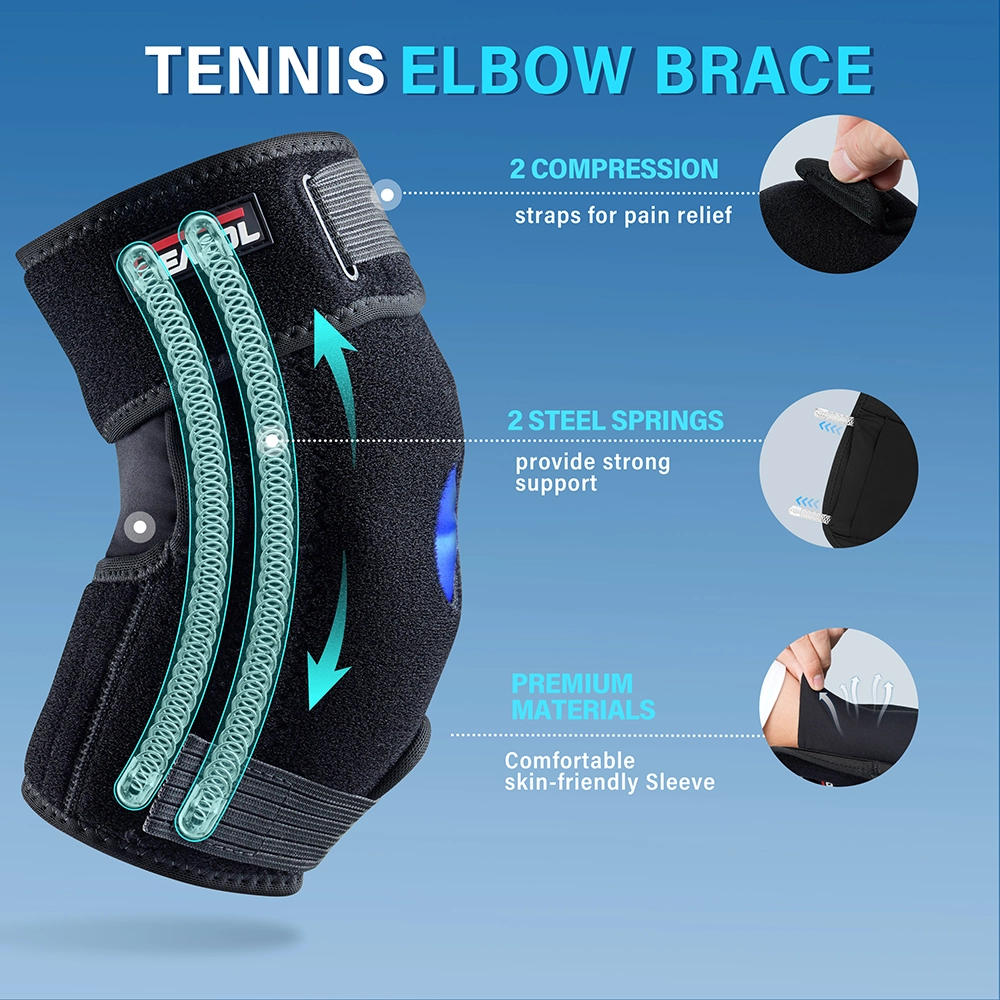
- Material: Crafted from breathable fabric with a soft, skin-friendly lining for all-day wear.
- Adjustable Fit: Dual compression straps offer customizable pressure to suit different activity levels.
- Support Type: Built-in with two discreet metal spring bars that deliver extra support and stabilize the elbow.
- Best for: Targeted pain relief and joint protection, especially during repetitive tasks or recovery periods.
FEATOL Tennis Elbow Brace with Ice Pack
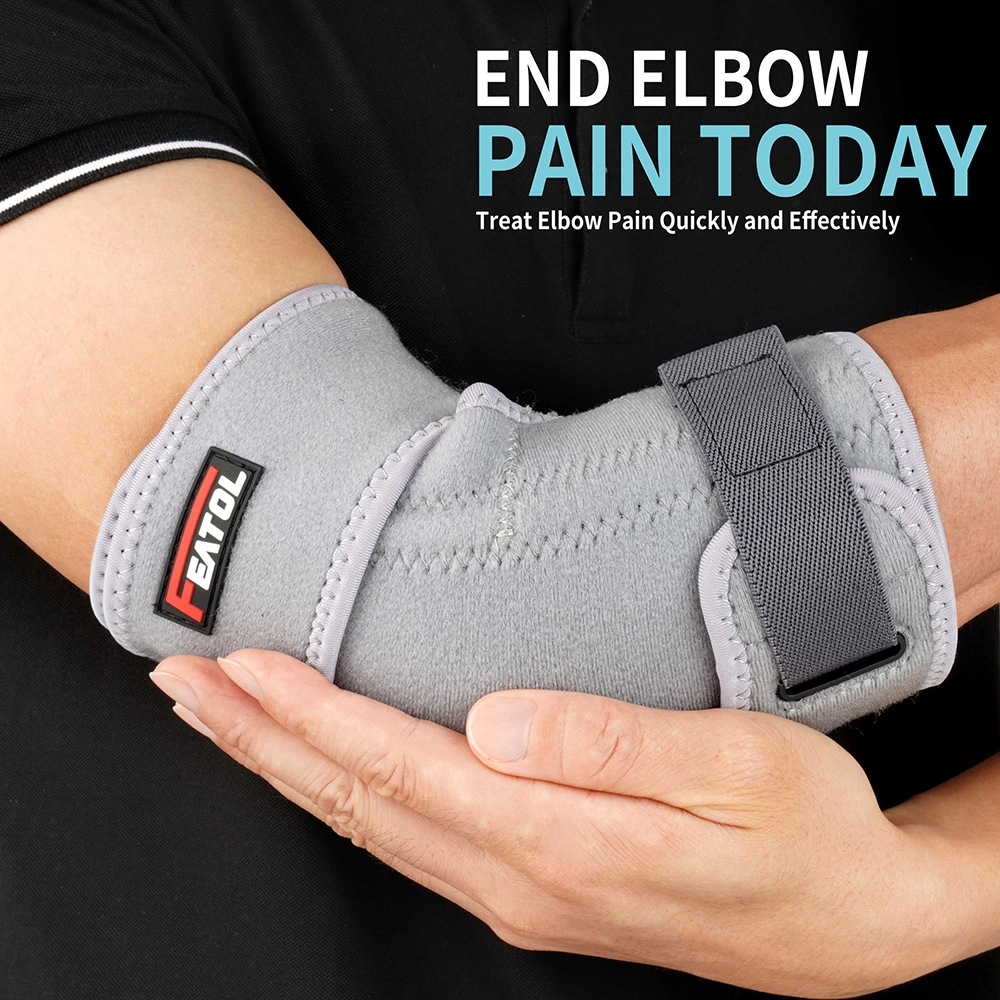
- Material: Uses the same breathable, comfortable fabric as our standard model, gentle on the skin.
- Adjustable Fit: Features dual adjustable straps for a snug, personalized fit.
- Support Type: Reinforced with hidden metal spring bars, plus a built-in pocket for the included ice pack.
- Best for: Providing strong support plus hot/cold therapy — ideal for managing inflammation and speeding up recovery.
FEATOL Ice Pack Elbow Support Strap
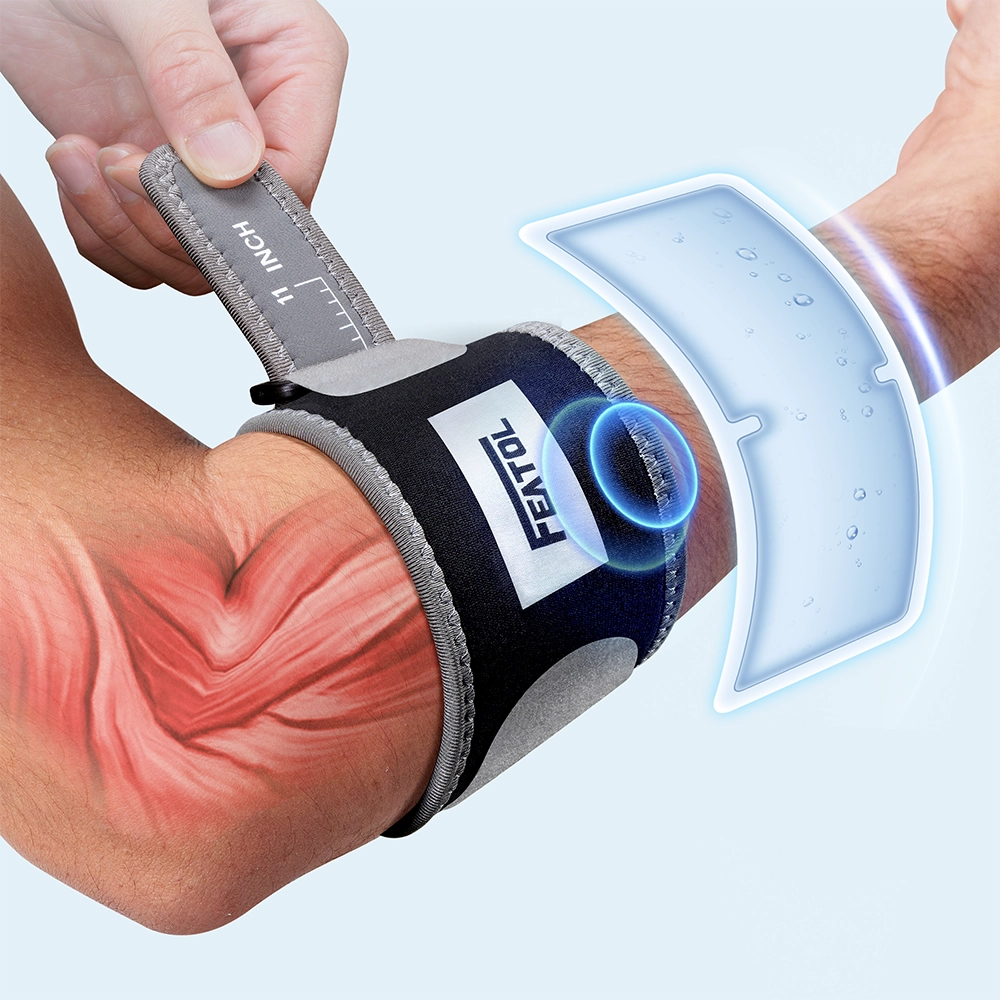
- Material: Lightweight and compact design makes it easy to carry and use anywhere.
- Adjustable Fit: Simple strap system lets you quickly adjust tightness as needed.
- Support Type: Combines compression with a removable ice pack for convenient, on-the-go relief.
- Best for: Quick, portable hot/cold treatment — perfect for sports, daily work, or early-stage prevention.
Explore more FEATOL braces for tennis elbow support.
Real Stories from FEATOL Users
“I love gardening, but after a few months of trimming hedges and pulling weeds, I started feeling sharp pain on the outside of my elbow. It got worse after each session. I didn’t want to stop my hobby, so I looked for a brace with cold therapy. FEATOL Tennis Elbow Brace with Ice Pack was exactly what I needed. It’s soft, supportive, and the cold pack slides in easily — I use it right after gardening to calm the soreness. On colder days, I even warm the pack up for heat therapy. It’s like having a mini treatment at home.”
—— Linda, 55, Gardener
“I’ve been doing carpentry for years, and the repeated use of tools gave me tennis elbow. The pain made it hard to grip or lift anything heavy. I tried the FEATOL tennis elbow brace and noticed a difference right away. It’s easy to adjust and gives solid support without feeling stiff. After a few days, my elbow felt better. Now I wear it anytime I’m working with tools.”
—— James, 45, Carpenter
Frequently Asked Questions
Q1: How do I wear a brace for tennis elbow correctly?
A: Position the brace about 1–2 inches below the elbow, with the pad placed over the sore muscle area.
Q2: Should I wear a tennis elbow brace at night?
A: It depends — if nighttime pain is severe, a brace can help, but avoid wearing it too tightly while sleeping.
Q3: How tight should a tennis elbow brace be?
A: The brace should feel snug but not restrict blood flow; you should still be able to move your arm comfortably.
Q4: What is the best tennis elbow brace for daily pain relief?
A: FEATOL offers the best tennis elbow brace with great support and all-day comfort.
Q5: How long should I wear the brace each day?
A: You can wear it for a few hours during activity or rest, but it’s best to remove it periodically to avoid stiffness.
Q6: Do elbow brace for tennis elbow really help with healing?
A: Yes, by relieving pressure on the tendons and reducing repetitive strain, a brace can support faster recovery.
References
- Park, D., & Chou, L. (2018). Lateral Epicondylitis: Review and Current Concepts. PMC
- Coombes, B. K., Bisset, L., & Vicenzino, B. (2015). Management of Lateral Elbow Tendinopathy: One Size Does Not Fit All. Europe PMC
